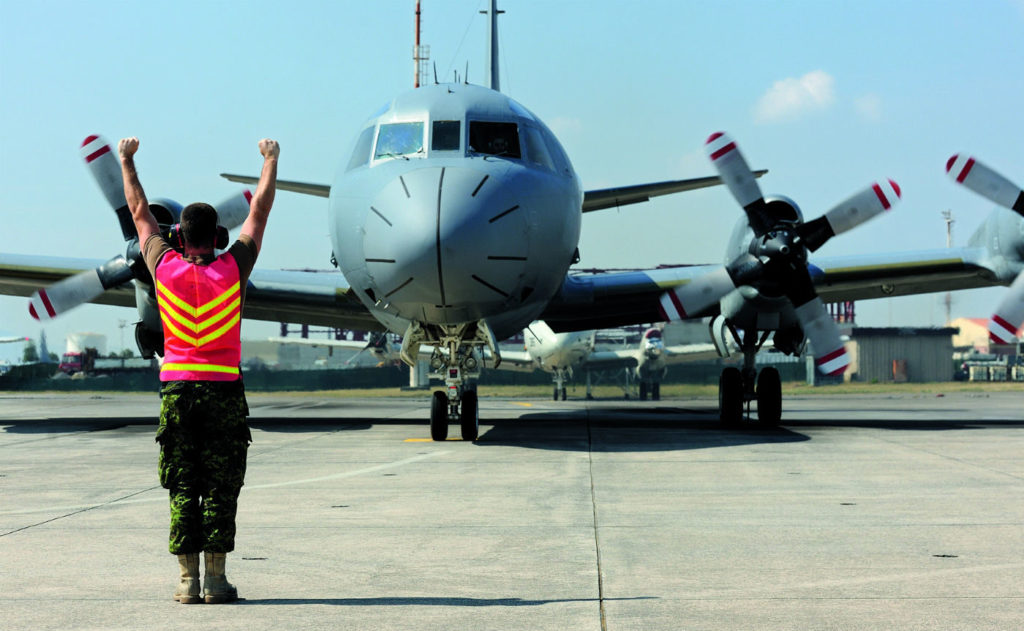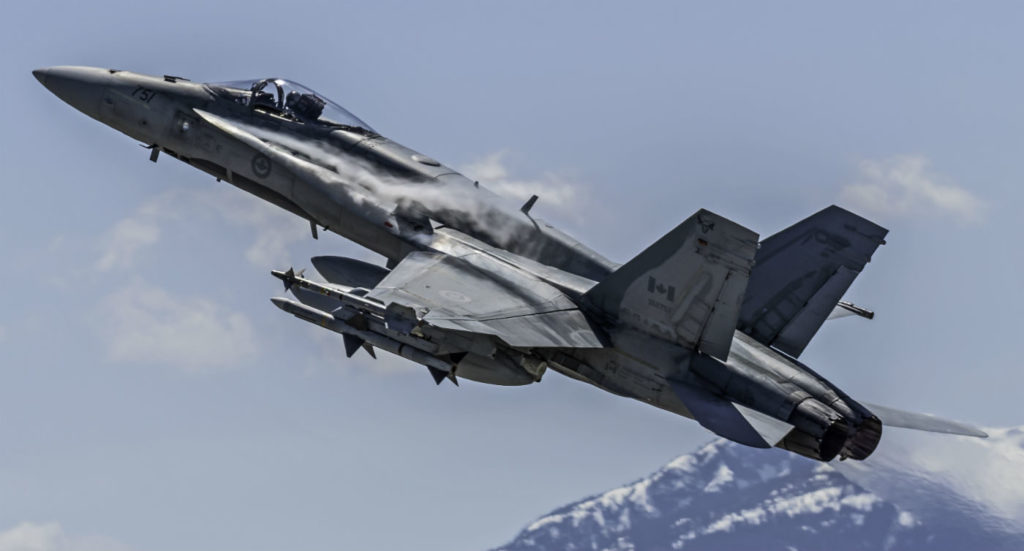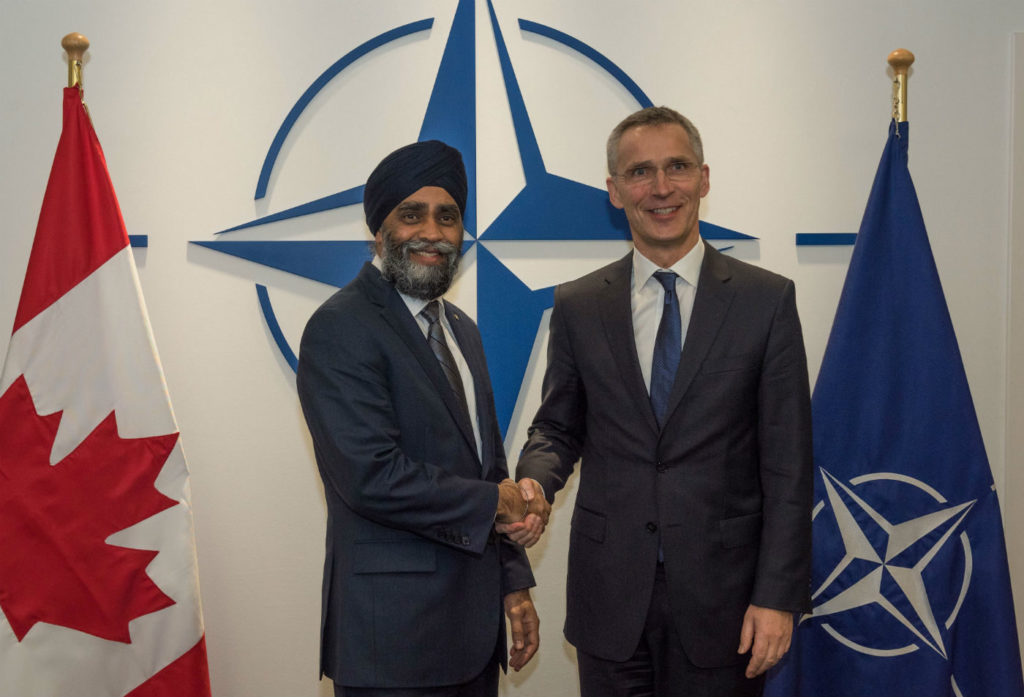Estimated reading time 10 minutes, 24 seconds.
Canada will acquire 88 advanced fighter jets to replace its fleet of CF-188 Hornets, the Liberal government announced in a new defence policy released on June 7, 2017.
The commitment was one of over a hundred in a hefty document, titled Strong, Secure, Engaged, that captures 14 months of public and government consultations and reverses recent year-over-year declines in defence spending by significantly increasing the defence budget from $18.9 billion in 2016-17 to $32.7 billion by 2026-27.

“I have been blunt about how years of under-investment have left our military in a financial hole,” said Defence Minister Harjit Sajjan when the policy was released. “[This] is the plan to emerge from that hole and build an even stronger Canadian Armed Forces (CAF), investing and operating sustainably over the next 20 years.”
The policy pledges to modernize the core fleets of the Army, Navy and Air Force and make new investments in space and cyber capabilities. It also provides for further investment in defence intelligence and communications systems and capacity to better anticipate and react to emerging threats.
“This vision reflects our comprehensive analysis of the security environment,” said a senior defence official, speaking on background.
The policy offers $33.8 billion over the next 20 years for some 50 critical new capital projects, “mainly in equipment but also infrastructure and information technology,” she said. It also provides $74.2 billion for more than 280 projects already on the books, a top-up of $5.9 billion on previous budgets to “better reflect their true costs,” according to the plan. And much of it is intended to be spent in the first 12 years of the policy.
To meet the demands of new capability, the government committed to an increase in the size of the CAF. The Regular Force will grow by 3,500 to 71,000, and the Reserves by 1,500 to 30,000. The civilian workforce is expected to increase by 1,150.
For the Royal Canadian Air Force (RCAF), that translates into $46.4 billion over the 20 years for acquisition. More than $20 billion is earmarked for 17 new programs, including a multi-mission aircraft to replace the CP-140 Aurora when the maritime patrol fleet reaches the end of its service life in 2030; a multi-role tanker to replace the CC-150 Polaris after 2026; unmanned aerial systems with weapons capability for intelligence, surveillance and reconnaissance (ISR) and target acquisition; and significant commitments-based systems to improve situational awareness, communications and targeting.

A further $26.4 billion is allocated to fully fund a lengthy list of existing programs, including midlife upgrades or life extension projects for the Polaris fleet, the CH-146 Griffon and CH-149 Cormorant helicopters, air navigation and management avionics across a number of platforms, and a tactical integrated command, control and communications network to manage the movement of ISR data.
“We have a much stronger commitment here to all of the projects that are already underway,” said a senior defence official.
However, the bulk of the existing Air Force program funding, between $15 and $19 billion, will go toward a new fleet of fighter jets to replace the Hornets, a sizeable increase from the $9 billion that had been estimated for 65 F-35 Joint Strike Fighters selected by the Conservative government before the program was frozen in 2012 over ballooning projected lifecycle costs.

“The previous government planned to purchase just 65 fighters, but didn’t actually purchase any, and didn’t budget adequately even for that inadequate fleet,” said Sajjan. “Eighty-eight fighters are required to fully meet our NORAD and NATO obligations simultaneously, not just risk-manage them, as the RCAF has had to do for a number of years.”
A senior officer, also speaking on background, said the new number of jets was based on an analysis of the future security environment as well as a capability-based analysis of NORAD and NATO commitments.
“Ultimately, for the RCAF, in considering its operational commitments to NATO and NORAD, its understanding of its maintenance profile requirements, and its understanding of its pilot and force generation requirements, 88 was the number that was necessary from a future fighter point of view to meet currently our [commitments].”
Defence officials did not address costs associated with the interim fighter capability project for 18 Boeing F/A-18 Super Hornets. The proposed acquisition suffered a setback last week when both Sajjan and Foreign Affairs Minister Chrystia Freeland publicly scolded Boeing and threatened to review the procurement following the company’s complaint to the U.S. International Trade Commission over government subsidies to Bombardier’s C Series aircraft. But they confirmed discussions remain ongoing with the U.S. government about the project.
Among other notable Air Force commitments, the government highlighted a project to replace the four CC-138 Twin Otter utility transport aircraft operated by 440 Transport Squadron out of Yellowknife; a comprehensive future aircrew training initiative; fighter lead-in training, including the option for a new training jet better suited to whatever the government acquires to replace the Hornets; and a Block 8 upgrade to the CC-130J Hercules fleet.
The senior officer said the CAF would be looking at remotely piloted vehicles in combination with spaced-based capabilities for domestic and expeditionary operations, and would seek a family of aircraft for the Army, Navy, Air Force and Special Forces, some of which are already fielded. Specific to the Air Force JUSTAS (Joint Unmanned Surveillance and Target Acquisition System) project, he said the medium altitude, long-endurance solution could be the same aircraft for both domestic and foreign operations and able to perform precision strikes as required.
The plan also commits to acquiring airborne ISR platforms for special operations forces (SOF). The policy did not specify an unmanned or fixed-wing solution, but SOF command has in the past considered proposals for a modified Beechcraft King Air 350 for the role.
Government officials and politicians were eager to emphasize that not only is the plan fully funded, but all of the proposed investments were heavily scrutinized.

“Those capabilities were subjected to the most rigorous costing analysis, expert third-party review and inter-agency scrutiny across government that any Canadian defence policy has ever undergone,” said Sajjan.
The Liberals opted not to re-open the debate on ballistic missile defence, but they did pledge to begin discussions with the U.S. on NORAD modernization. “That will include replacing the North Warning System with new technology. And it will include an all-perils approach to protecting against the full range of threats including air, maritime and underwater threats,” said Sajjan.
The policy acknowledged the critical role of the defence and aerospace industries in delivering capability and pledged to “increase the transparency and timeliness of communication to the defence industry associations,” including through a new defence industry advisory group, as part of larger efforts to streamline procurement.
That message was meet with enthusiasm from Canada’s trade associations.
“The government’s new defence policy statement is the first time in over 30 years that such positive language has been used to recognize the value of Canada’s defence industrial base and how industry contributes to meeting Canada’s defence objectives,” said Christyn Cianfarani, president of the Canadian Association of Defence and Security Industries (CADSI).
“The passion and commitment of senior defence officials and military officers was clear in all of the briefings and discussions that have led to today. They clearly believe in this new policy and are already working to see it put into practice,” added Jim Quick, president and chief executive of the Aerospace Industries Association of Canada (AIAC).









It’s great news for sure, but I can’t help but mistrust the the government to follow through. Without meaning to sound partisan, the Liberals have a very sketchy record on military expenditures. I’ve never felt their commitment to having a robust military or upholding their commitment to NATO. This program is back-loaded which is sleight of hand on their part and requires multiple re-elections to fulfill.
I will park the cynicism and get on board the cheering bandwagon to congratulate them on their plan and hope they give me reason to applaud their follow through. I’ll be clapping the loudest if they do.
Great news !! Wish I could believe it’s not a n attempt to bury the ministers recent self agrandizing statements talk costs nothing